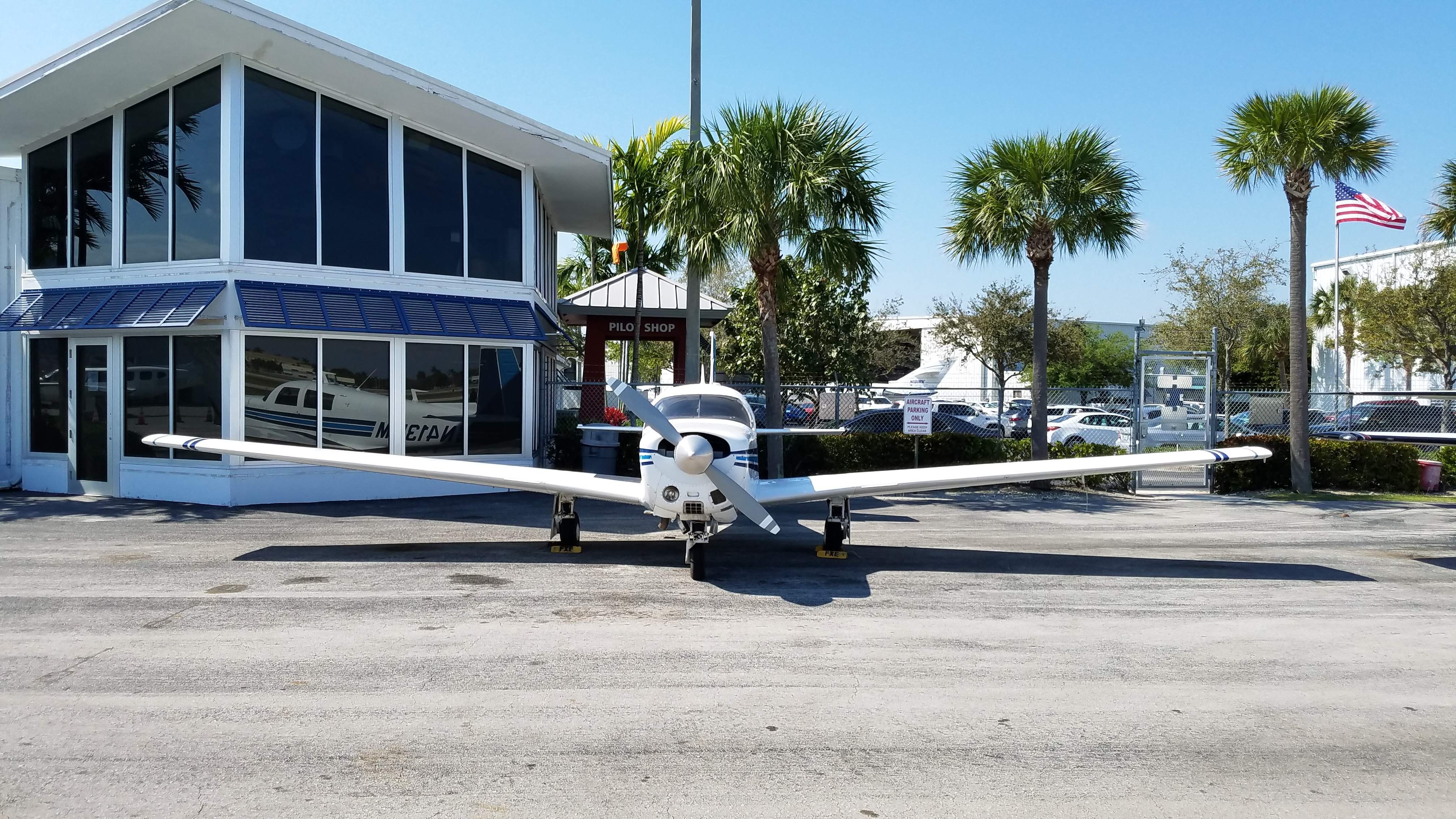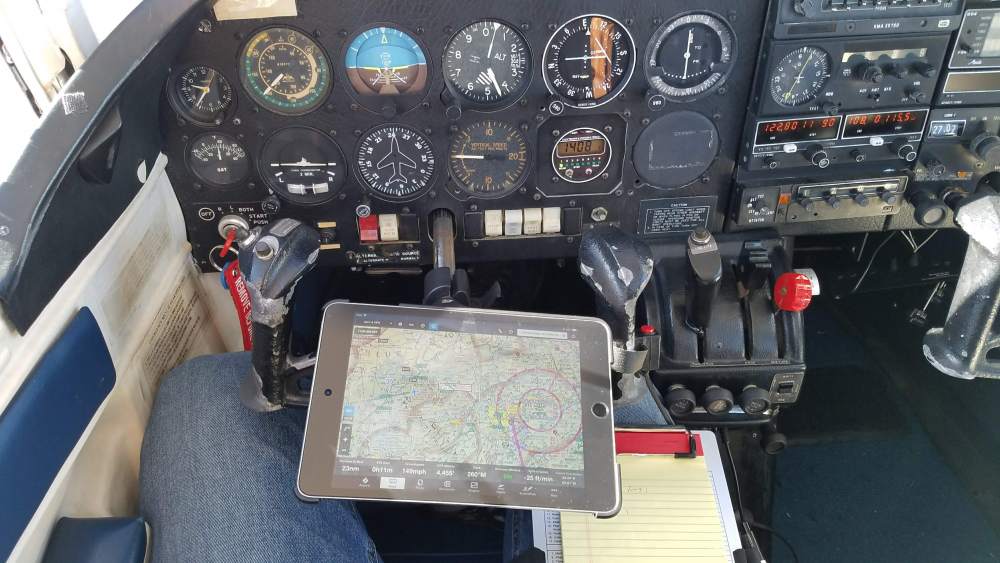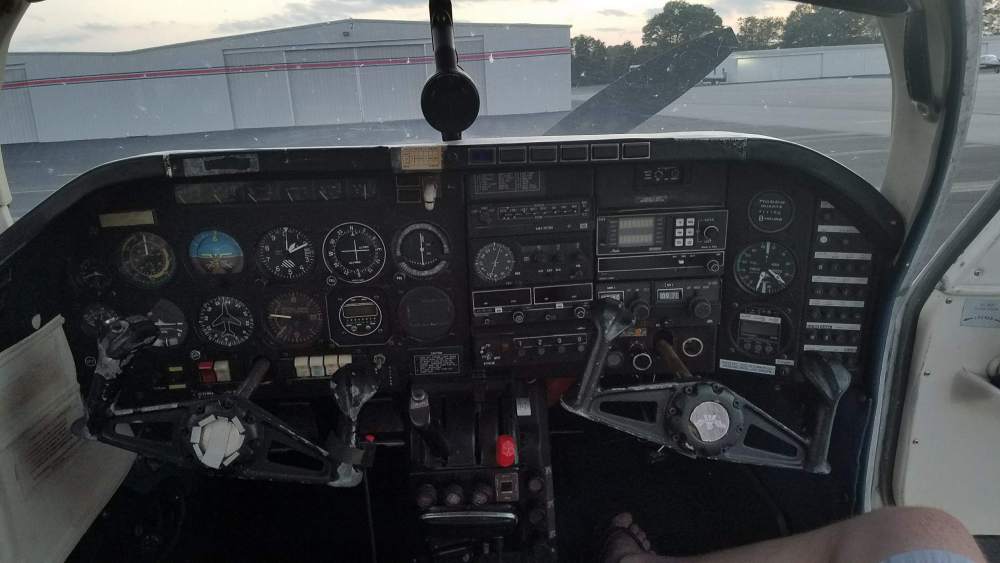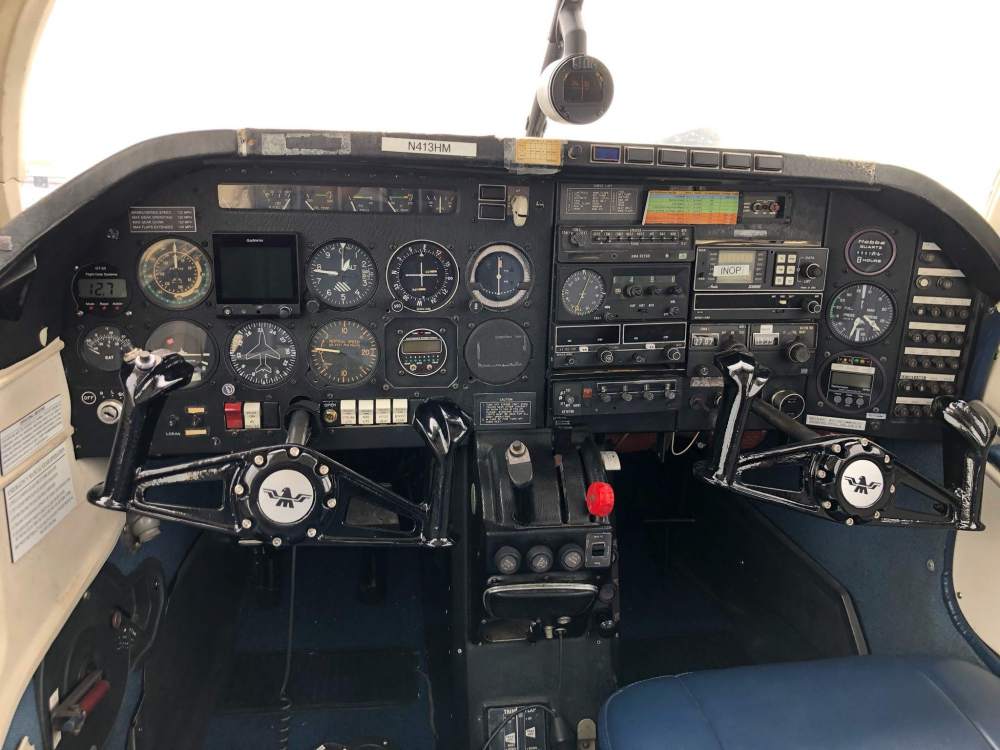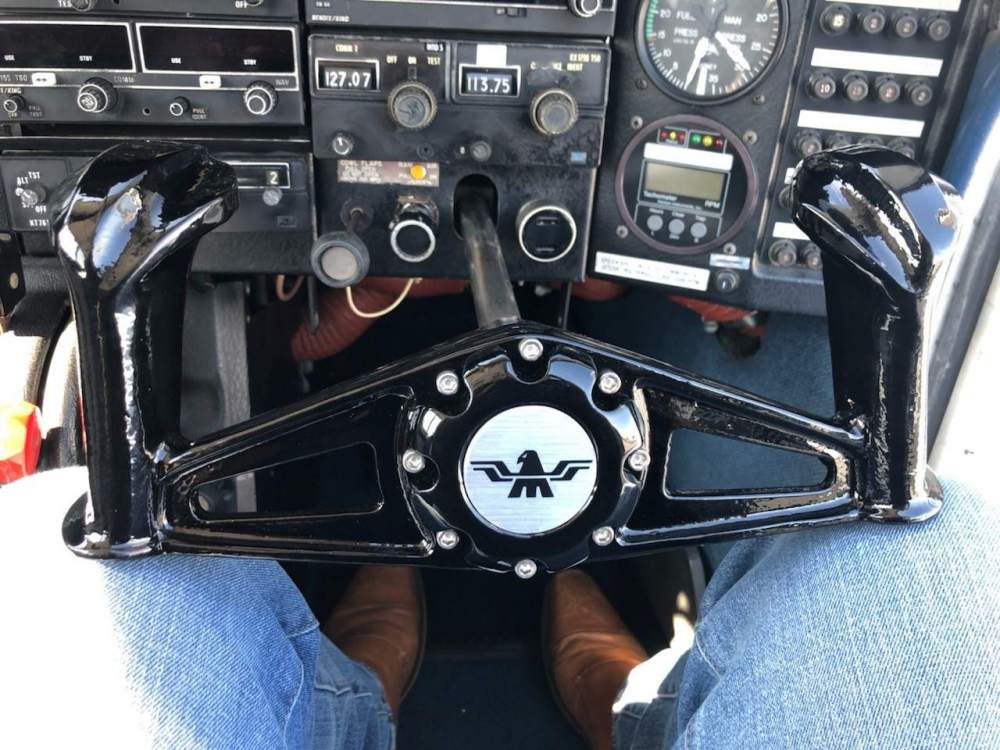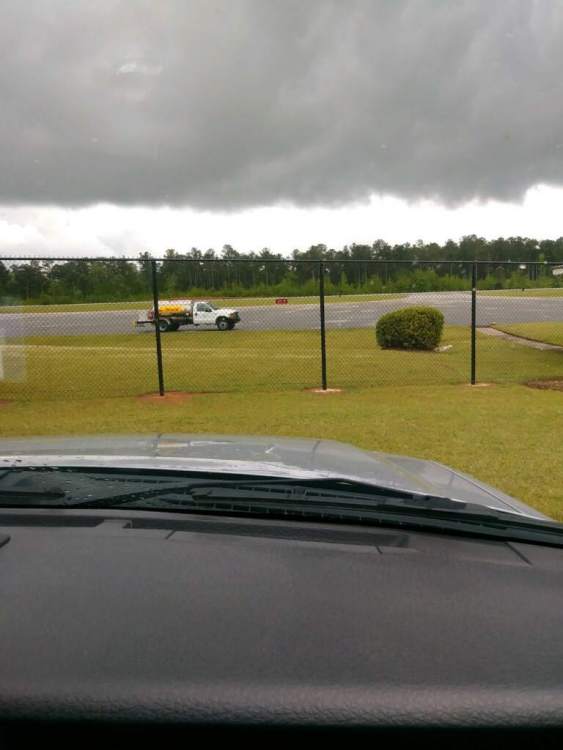-
Posts
604 -
Joined
-
Last visited
-
Days Won
1
Content Type
Profiles
Forums
Blogs
Gallery
Downloads
Media Demo
Events
Everything posted by bob865
-
So I agree with @bradp, sounds like a configuration issue. This is directly from the ADS-B PAPR: For my test flight, I didn't do anything really special. I requested the code on my flight back from getting my tanks sealed. I only had 25 of rule airspace time, but got an e-mail immediately after saying they were going to manually review and it passed. As long as it has not failures and you are in rule airspace for at least 30 minutes, you're good. What you do while you're there doesn't seem to matter much. Here is the link to the PAPR users guide. It will give you a good bit on info on what all that stuff means.
-

iPad Mini in Mooney? Mount type? Location?
bob865 replied to Michael Williams's topic in General Mooney Talk
I'm using a mygoflight mount. It clamps to the tube just behin the yoke and is articulating to drop the mount right between the yokes. https://mgfproducts.com/collections/mounts-1/products/sport-mount-flex-yoke?variant=10434663841907 The mount has a quick connect so I can mount my iPad mini 4 and my partner can mount his iPad mini 3 to the same mount. Their holders for the iPad are nice too. I use mine as a hard case when it's not locked in the plane. It also has rails across the back so you can put an elastic strap through and use it as a knee board too if you like. The prices are a bit stupidly high, but I guess since I felt the need to tell you about it, I think it's worth it. https://mgfproducts.com/collections/mounts-1/products/ipad-mini-4-sport-case-kneeboard-mountable?variant=17443297165427 -
Funny to learn that it's a squall line since I was pulling up the chart to see where the front was specifically to find out where the squall line would likely be. I never expected to see it plotted. I was looking this particular day because the weather here tends to flow more southwest to northeast, almost matching the direction of the mountains. Watching the RADAR I could see the movement was almost perfectly south to north. I was sitting at work which is just east of the squall and never saw more than a little rain. All this, I thought, unusal so I wanted to see where the front was to see if it was causing the unusual to me flow direction.
-
We just re-did ours at annual time. The aluminum was corroding and bubbling up under the paint. It was pretty bad. Not to mention the mooney logos were long gone. We didn't do anything special really. We just sanded them down and got rid of the corrosion, inspected, and then painted with a high gloss auto finish (by a buddy who does body work). The same guy has a daugther with access to a laser printer and made us some new logo inserts.
-
Was checking the weather today (well a couple of days ago now) and looking at the charts and saw a symbol I don't remember ever seeing in the past. It's drawn as if it is a front, but it't not a front symbol I know. It is red dashed line with two red dots. I've done a quick google search, though admittedly not very thorough, and found nothing. Does anyone know what these symbols mean?
-
@Kmac I'm at a loss then. Let us know what uavionix has to say.
-
Can you post a screenshot of your papr? Specifically the page where I'm assuming you see red blocks and a MCF (maximum continuous failues). If I recall/understand the report correctly, a 3A failure means that the FAA recieved data frames with the squawk code missing. A Flight ID failure would be that the Squawk from your transponder and the squawk broadcast by your ADS-B set, skybeacon in your case, do not match. In my massively untrained opinion, it sounds like you need to adjust your threshold a little more. It sounds like the skybeacon is picking up your squawk, but it's picking it up slowly. As long as you are getting radar interrogation on your nomal mode C transponder on the ground, the skybeacon should pick up the squawk very quickly. I'm guessing you flew and picked up flight following or something in the air. They assigned you a different squawk than you took off with and you switched while in the air. That's when the flight ID faults showed up. The transponder starting replying with the the new squawk, but the skybeacon took a little while to hear the new squawk and reset itself.
-
Sounds like your son has "The Knack."
-
Remember the wifi turns off 5 minutes after startup. You will be able to toggle the strobe for the first 5 minutes. After that it will stay wherever it was until you power cycle the skybeacon to get the wifi back.
-
My folks live in Pine Mountain. I fly in regularly to visit, but can't make it for lunch due to work responsibilites. I told my mom about the lunch and she is talking about stopping by the airport to see all the Mooneys. If you see a lady in a red Rav 4 wandering about looking at the planes, say "Hi, Debra!" or "Hi, Mimi!" That will make her day.
-

South Carolina Airport Recommendations
bob865 replied to Marauder's topic in Miscellaneous Aviation Talk
I fly into UZA regularly. The In-laws live there. They typically waive the overnight fee when I buy gas. I haven't stayed more than one night so I can't say any more than I've never paid an overnight fee and I've always bought gas. Their gas is cheaper than my home airport so I don't mind. -
Here ya go https://en.wikipedia.org/wiki/OSI_model If I made a mistake, let me know where. This stuff is a random interest of mine so I'd seriously like to know.
-
I agree with your genreally slower statement, but think about what you actually send across the wire in these applications. It's short telegrams of very specific data. For example the basic ADS-B message your plane broadcasts, assuming you're 2020 compliant, is only 112bits. (https://mode-s.org/decode/adsb/introduction.html in case you're interested) That's not a typo, it's bits not bytes. That's only 14 bytes or .013kb, or 0.000013MB and that contains your ID, surface position, airborne position with baro alt, airborn velocity, airbone position with gnss height, and a few other pieces of info. You don't need blazing speeds for that kind of transmission. You're not sending video and pictures in these cases. You just need it to be robust and reliable. And the slower you go, the less opportunity there is for error in encoding or decoding. Fun fact, we may all complain about the range of of our wifi, but did you know they were able to communicate all the way across the continent of Austrailia with 802.11b wifi? They were able to do this becuase of the speed degrades in wifi allow B wifi to downgrade all the way to 1MB which allows for up to 180 degrees of error to be injected and the signal still successfully decoded. To go faster, we have to define more data points on the carrier wave which means less room for error. To go even faster, we have to use mulitple modulation methods, which puts the data points even closer still and even less room for error. Your point about TCP vs. UDP is where I was going with the industiral automation statement. We may use IP based systems for automation, but there is no TCP to be found(except for non-I/O related tasks). There isn't even UDP. They are all propritary standards. For example Allen Bradley uses EthernetIP, Siemens uses Profinet, and inside a Kuka cabinet, they use EtherCat. You can typically get any standard with any manufacturer, but these are the 'native' standards. All of these define their own special Transport layer specs. And you have to pay a liscense fee for every device that communicates using that protocol. Technology aside, I would think this alone could cause problems with certification. Who would pay to get the FAA to cerfity a protocol? I certainly wouldn't since it means if I do someone could buy my competitor's product since it would work with my other product. And I doubt the FAA is going to take the initiative to specify a certified standard either.That seems like it would open a whole new can of worms too. I assume that is how it would work. I'm not sure how exactly you go about certifying software. Just my thoughts. Geeking out on this a little bit.
-
Nah. We are doing ok. Industrial automation pays my slary too. We are largest auto exporter by value in the US so our equipment is talking ok. Below is a comparison article that may explain your question @Emmet http://canlab.cz/pages/download/artikel_comparison_can_and_ethernet.pdf What I understood from the article is it is a faster and more secure.
-
I don't know that I agree with the IP based strategy. CANBUS is THE standard for interdevice communication in the auto industry and it is designed specifically for what garmin is using it for, communicating between their different devices. In industrial automation, we use IP based systems for I/O, but they are not as easy to work with as you might think. The standards have to be redesigned for the industrial environmnet so they have their own set of problems. Yes, IP based may more "adaptable," but look at what Garmin is using it for. They are using to talk between their devices, not their device and aspen and avidyne. Just like you BMW statement, they communicate between other BMW devices, not BMW and yamaha. It does exactly what they want. If you want to see IP based systems, you'll have to get the WHOLE avionics industry to sit down and agree and develop one and maybe I'm a pessimist, but that is never going to happen.
-
Is this for a single wingtip strobe?
-
The Mason-Dixon line between Pennsylvania and Maryland. https://en.wikipedia.org/wiki/Mason–Dixon_line
-
I wish I could make it. I've got a couple of big projects stating at work over that weekend and have to be home. Maybe next time.
-
I have family in Pine Mountain so I could have a mooney lunch and visit family too. Was there a date set that I missed?
-

Eapis made easy - Flashpass.net
bob865 replied to Ericthepilot's topic in Miscellaneous Aviation Talk
-

Who makes the decisions at the FAA regarding ADSB???
bob865 replied to Culver LFA's topic in Miscellaneous Aviation Talk
I guess I'll be the dissenting opinion here. Why is this a big deal? All of the ADS-B required areas are virtually the same as the current Mode C areas. If you have a classic airplane and don't want to install a tranponder, you don't have to. There is the provision to allow you to pass through these areas without it. Same with ADS-B. There is really nothing different. The only difference here is we are at the beginning of ADS-B being required. I imagine if mooneyspace has been around when Mode C first became required we would have heard these same arguments and complaints. It's funny that we complain about how far behind aviation is technology wise, but when the FAA pushes and forces us (aviation as a whole) to update, we compain even louder. @MarauderI've heard the same. We had an ATC forum here months back and we asked the Charlotte Class B guys about it and they don't have it and no ETA on when they will. -

What are you looking for ?? Avionics
bob865 replied to Alan Fox's topic in Avionics / Parts Classifieds
@Alan Fox What have you got in the way of WASS GPS/Nav/Coms? I think I saw an avidyne unit in there? Looking for the 430/440 size. 14V -
My E model has the stock OAT mounted under the right wing just outboard of the landing gear. Does yours have a stock OAT? Why not use the same one and the same routing location if so?
-
Found one. Thanks everyone.

